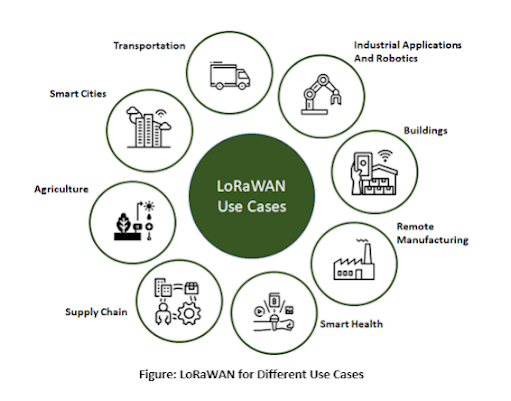Introduction:
Water scarcity
and inefficient irrigation practices have long been challenges faced by the
agricultural sector. However, with the advent of innovative technologies, there
is hope for improved irrigation efficiency and optimal water usage. One such
transformative technology is the automation of lift irrigation systems using
LoRaWAN (Long Range Wide Area Network). In this article, we will delve into the
exciting potential of integrating lift irrigation with LoRaWAN, revolutionizing
agricultural water management and promoting sustainable farming practices.
Understanding
Lift Irrigation:
Lift irrigation is a method that involves pumping water from a lower to a higher elevation, allowing it to flow through canals or pipelines to irrigate farmland. Traditionally, these systems have been manually operated, relying on human intervention to control water flow and distribution. Unfortunately, this approach often leads to inefficiencies, resulting in water wastage and suboptimal crop growth due to uneven distribution.
The Role of
LoRaWAN:
LoRaWAN, a
low-power, wide-area networking technology, offers an ideal solution for lift
irrigation automation. By integrating LoRaWAN into these systems, several
significant advantages can be realized:
- Real-time Monitoring: LoRaWAN
enables the installation of sensors throughout the lift irrigation
infrastructure, allowing for real-time monitoring of crucial parameters such as
water flow, pressure, and soil moisture levels. This information provides
valuable insights into the irrigation process, enabling farmers to make
data-driven decisions.
- Remote Control and Automation:
LoRaWAN facilitates remote control of lift irrigation systems. Farmers can
monitor and adjust water flow, timing, and distribution from a centralized
control center or even through mobile applications. This automation eliminates
the need for constant physical presence at the site, saving time and effort for
farmers.
- .Precise Water Management: With
LoRaWAN-enabled sensors, farmers can access accurate and up-to-date data on
soil moisture levels in different areas of the fields. This information helps
them precisely tailor the irrigation schedule and water delivery, ensuring that
crops receive the optimal amount of water for healthy growth while avoiding
over-irrigation.
- Water Conservation: By using
LoRaWAN for lift irrigation automation, water conservation becomes a priority.
The ability to closely monitor and control water usage helps minimize wastage
and prevent over-irrigation, resulting in significant water savings. This not
only addresses the issue of water scarcity but also promotes sustainable
agricultural practices.
- Enhanced Crop Yield and
Quality: Efficient water management through LoRaWAN automation positively
impacts crop yield and quality. By ensuring that crops receive an adequate and
timely water supply, farmers can optimize growth conditions and minimize the
risk of water stress, leading to healthier plants and improved yields.
Challenges and
Considerations:
While the
integration of lift irrigation with LoRaWAN brings numerous benefits, there are
a few considerations to keep in mind:
- Initial Investment:
Implementing LoRaWAN technology requires an initial investment in
infrastructure, including sensors, gateways, and network setup. However, the
long-term benefits and potential cost savings from efficient water management
outweigh the initial costs.
- Connectivity and Range: LoRaWAN
operates on low-power, long-range connectivity, but the range can be influenced
by geographical factors and obstacles. It is crucial to plan the positioning of
gateways and sensors to ensure reliable communication and coverage throughout
the lift irrigation system.
- Data Security: As with any technology, data security is paramount. Farmers must ensure that adequate measures are in place to protect the data collected by LoRaWAN sensors and gateways, preventing unauthorized access or misuse.
Conclusion:
The integration
of lift irrigation systems with LoRaWAN technology has the potential to
revolutionize agricultural water management. By providing real-time monitoring,
remote control, and precise water management, LoRaWAN enables farmers to
optimize irrigation practices, conserve water resources, and enhance crop yield
and quality. While challenges exist, the long-term benefits make it a promising
solution for sustainable and efficient farming practices. With continued
advancements in technology and increased adoption, lift irrigation automation
through LoRaWAN is set to play a vital role in ensuring a greener and more
prosperous agricultural future.







